Combined BPA and DIBP Exposure Induced Intestinal Mucosal Barrier Impairment Through the Notch Pathway and Gut Microbiota Dysbiosis in Mice
- PMID: 39856883
- PMCID: PMC11765467
- DOI: 10.3390/foods14020214
Combined BPA and DIBP Exposure Induced Intestinal Mucosal Barrier Impairment Through the Notch Pathway and Gut Microbiota Dysbiosis in Mice
Abstract
Bisphenol A (BPA) and diisobutyl (DIBP) phthalate are widely used as typical plasticizers in food packaging. Plasticizers can be released from polymers, migrate into food, and be ingested by humans, leading to various health problems. However, little research has investigated the combined toxicity of BPA and DIBP, particularly their intestinal toxicity. Our goal is to analyse the combined toxicity of BPA (50 mg/kg) and DIBP (500 mg/kg) on the intestines of KM mice. Additionally, we tried to find natural products that can inhibit or prevent the combined toxicity of BPA and DIBP. The results indicated that the combination of BPA and DIBP exposure resulted in a reduction of beneficial flora, an increase in D-Lac levels (136 ± 14 μmol/L), an increase in intestinal permeability, activation of the notch pathway, and a decline in intestinal stem cells (ISCs) to goblet cells, compared to single-exposure sources. Nevertheless, Rubus chingii Hu phenolic extract (RHPE) (200, 400 and 600 mg/kg) ameliorated the BPA and DIBP-induced intestinal microbiota disruption and intestinal mucosal barrier impairment by inhibiting the overactivation of the notch pathway. The results of this study highlight the potential risks to human health posed by the combination of BPA and DIBP and may help explain the potential pathways of enterotoxicity caused by combined ingestion.
Keywords: BPA; DIBP; Rubus chingii Hu phenolic extract; gut microbiota; intestinal mucosal barrier; notch pathway.
Conflict of interest statement
The authors declare that they have no known competing financial interests or personal relationships that could have appeared to influence the work reported in this paper.
Figures



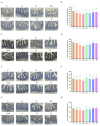

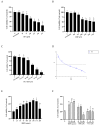

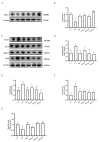
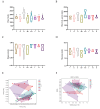
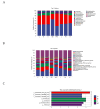

Similar articles
-
Bisphenol chemicals disturb intestinal homeostasis via Notch/Wnt signaling and induce mucosal barrier dysregulation and inflammation.Sci Total Environ. 2022 Jul 1;828:154444. doi: 10.1016/j.scitotenv.2022.154444. Epub 2022 Mar 9. Sci Total Environ. 2022. PMID: 35278557
-
Hepatoprotective effect of curcumin against bisphenol A-induced hepatic steatosis via modulating gut microbiota dysbiosis and related gut-liver axis activation in CD-1 mice.J Nutr Biochem. 2022 Nov;109:109103. doi: 10.1016/j.jnutbio.2022.109103. Epub 2022 Jun 30. J Nutr Biochem. 2022. PMID: 35780999
-
Bisphenol P exposure in C57BL/6 mice caused gut microbiota dysbiosis and induced intestinal barrier disruption via LPS/TLR4/NF-κB signaling pathway.Environ Int. 2023 May;175:107949. doi: 10.1016/j.envint.2023.107949. Epub 2023 Apr 25. Environ Int. 2023. PMID: 37126915
-
Dietary glycation compounds - implications for human health.Crit Rev Toxicol. 2024 Sep;54(8):485-617. doi: 10.1080/10408444.2024.2362985. Epub 2024 Aug 16. Crit Rev Toxicol. 2024. PMID: 39150724
-
The Toxic Effects of Endocrine Disrupting Chemicals (EDCs) on Gut Microbiota: Bisphenol A (BPA) A Review.Endocr Metab Immune Disord Drug Targets. 2022 Aug 15;22(7):716-727. doi: 10.2174/1871530322666220325114045. Endocr Metab Immune Disord Drug Targets. 2022. PMID: 35339192 Review.
References
-
- Han D., Yao Y., Chen L., Miao Z., Xu S. Apigenin ameliorates di(2-ethylhexyl) phthalate-induced ferroptosis: The activation of glutathione peroxidase 4 and suppression of iron intake. Food Chem. Toxicol. Int. J. Publ. Br. Ind. Biol. Res. Assoc. 2022;164:113089. doi: 10.1016/j.fct.2022.113089. - DOI - PubMed
-
- Liu M., Du X., Chen H., Bai C., Lan L. Systemic investigation of di-isobutyl phthalate (DIBP) exposure in the risk of cardiovascular via influencing the gut microbiota arachidonic acid metabolism in obese mice model. Regen. Ther. 2024;27:290–300. doi: 10.1016/j.reth.2024.03.024. - DOI - PMC - PubMed
-
- Lambré C., Barat Baviera J.M., Bolognesi C., Chesson A., Cocconcelli P.S., Crebelli R., Gott D.M., Grob K., Lampi E., Mengelers M., et al. Re-evaluation of the risks to public health related to the presence of bisphenol A (BPA) in foodstuffs. EFSA J. Eur. Food Saf. Auth. 2023;21:e06857. doi: 10.2903/j.efsa.2023.6857. - DOI - PMC - PubMed
Grants and funding
LinkOut - more resources
Full Text Sources

